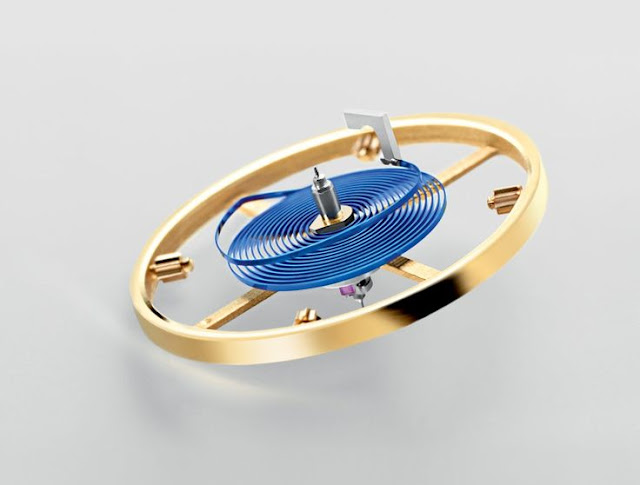Top 5 Rolex Tech Innovations
May 11, 2016 |
| Top 5 Rolex Tech Innovations (photo: Rolex) |
The 5 tech innovations listed below were developed and patented by Rolex over the last century and continue to differentiate the watchmaker from its competitors. Click on the innovation name for more detailed information.
Rolex Blue Parachrom Hairspring
 |
| Rolex Blue Parachrom Hairspring (photo: Rolex) |
The blue Parachrom hairspring was developed by fusing niobium and zirconium with a precise amount of oxygen. The chemical composition of the hairspring makes it more resistant to magnetism and shocks, making the timepiece up to ten times more accurate. It gets its blue color from the patented surface treatment used on the hairspring.
It took several years for the physicists and materials engineers at Rolex to come up with the chemical composition of the alloy and surface treatment that give the hairspring its distinctive blue color. The blue color itself is a technical achievement reserved only for the most prestigious watchmakers.
 |
| Rolex Chronergy Escapement (photo: Rolex) |
The escapement of a mechanical watch movement transfers the energy from the mainspring to the oscillator. It is responsible for the ticking noise that is associated with mechanical watch movements. The escapement is composed of four parts: the escapement wheel, pallet fork, pallet bridge and the roller. The friction caused by these metal components is offset by rubies and patented lubricants, allowing the escapement to tick for many years without requiring replacement.
The Chronergy component of escapement is a newly developed version of the Swiss lever escapement that uses geometry to improve its efficiency by 15%. The escapement is also cut out to reduce its weight and minimize the effects of inertia. The escapement wheel is made of nickel-phosphorous to protect it form magnetic interference.
 |
| Rolex Paraflex Shock Absorber (photo: Rolex) |
The shock absorption system is an important component of the mechanical watch movement. It protects the oscillator and other fragile pieces from shocks that could lower their accuracy. For Rolex, it seems logical for them to have developed this innovation in tandem with their blue Parachrom hairspring, ensuring that their newly developed parts are protected in the long run.
 |
| Rolex Perpetual Rotor (photo: Rolex) |
Patented by Rolex in 1931, the perpetual rotor is one of the most important tech innovations in the history of the watchmaker. The first perpetual rotor with an oscillating weight, this innovation utilized the movement of the wrist and the laws of physics to provide power to the movement without requiring the wearer to wind the crown.
The half-moon shaped oscillating weight completes 360º rotations and, in doing so, powers the mainspring. It is equipped with a clutch system that prevents the rotor from overwinding the mainspring, creating a harmonious and efficient power source for the movement.
The patent for the perpetual rotor expired in 1948, allowing the entire watchmaking industry to adopt this technology. This made automatic or self-winding wristwatch movements the new industry standard.
 |
| Rolex Oyster Case (photo: Rolex) |
Introduced in 1926, the Oyster case is perhaps the most recognizable innovation of the watchmaker to date. The original Oyster case used a patented system of screwing the bezel, case back and winding crown to the middle of the case, creating a hermetic seal that protected the Oyster watch up to 100 meters underwater.
All of today's Oyster Perpetual models feature their recognizable Oyster case. Rolex stamps the entire middle case out of a solid block of metal and adheres it to a screw-down fluted case back. The crystal and bezel are then friction fitted to it and either a Twinlock or Triplock winding crown is added to complete the seal.
For a more comprehensive list of Rolex tech innovations, check out our Tech page.






0 comments